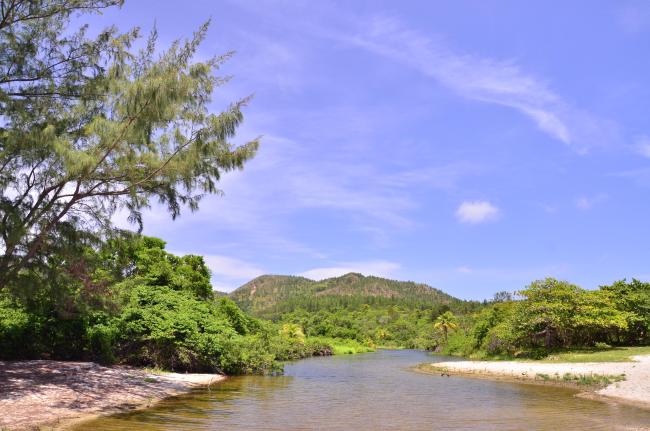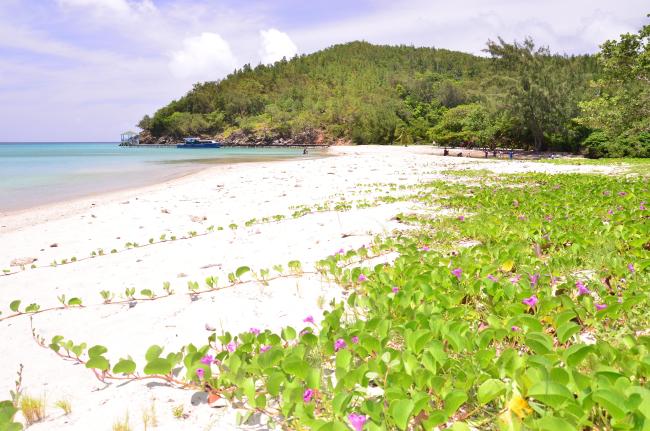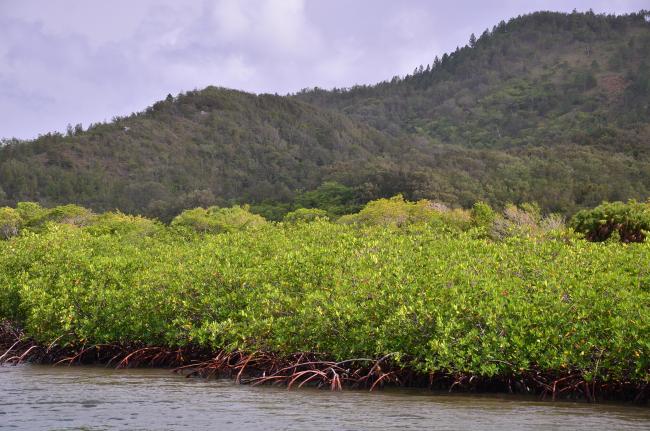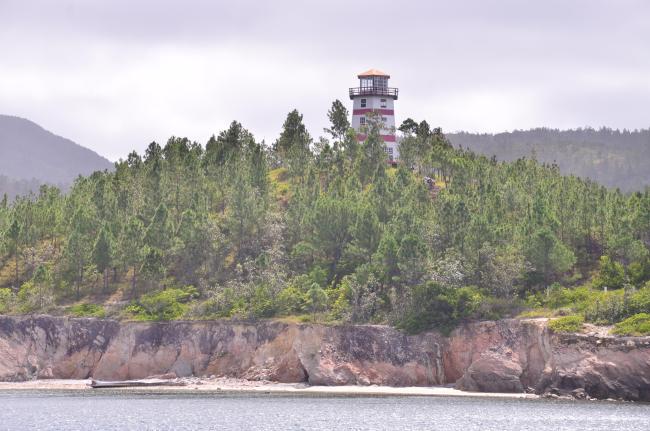Sistema de Humedales de la Isla de Guanaja
Sistema de Humedales de la Isla de Guanaja
- Country:
- Honduras
- Site number:
- 2456
- Area:
- 13,148.0 ha
- Designation date:
- 25-10-2021
- Coordinates:
- 16°27'40"N 85°53'08"W
Carousel
CarouselMaterials presented on this website, particularly maps and territorial information, are as-is and as-available based on available data and do not imply the expression of any opinion whatsoever on the part of the Secretariat of the Ramsar Convention concerning the legal status of any country, territory, city or area, or of its authorities, or concerning the delimitation of its frontiers or boundaries.
The Site hosts numerous ecosystems such as mangroves with associated coastal vegetation, seagrass meadows, white sand beaches and a complex reef system surrounding the island of Guanaja. It supports representative species of the area, including several listed on the IUCN Red List such as the American crocodile (Crocodylus acutus) and the loggerhead turtle (Caretta Caretta), classified as vulnerable, and corals such as staghorn coral (Acropora cervicornis) and elkhorn coral (Acropora palmate), which are both critically endangered. The mangrove forest is also home to a considerable diversity of fauna and flora, including 146 species of birds such as the brown pelican (Pelecanus occidentalis), the roseate tern (Sterna dougallii) and the peregrine falcon (Falco peregrinus). The Site’s marine ecosystems provide shelter and food for dozens of marine species such as the goliath grouper (Epinephelus itajara), the Lahille’s bottlenose dolphin (Tursiops truncatus), the yellow stingray (Urobatis jamaicensis) and the Atlantic nurse shark (Ginglymostoma cirratum). The Site also provides ecosystem services for the approximately 1,000 people living on Guanaja Island, most of whom depend on industrial fishing and artisanal lobster and conch fishing. It is also an area for recreation and ecotourism due to its unique landscape and rich biodiversity. However, its ecological value is under constant threat from extreme weather events such as Hurricane Mitch in 1998, which considerably affected the mangroves in the area, in addition to the increased water pollution due to the lack of an adequate sanitation system and uncontrolled development.
- Parque Nacional Marino Islas de la Bahía - Zona de Protección Especial Marina
- Reserva Forestal - Zona Forestal Reservada Numero Tres
- HN2456RIS_2110_es.pdf
- HN2456_map190218.jpg
- HN2456_taxo190603.docx
- HN2456_ECD190603.pdf
- HN2456_descr190718.pdf





